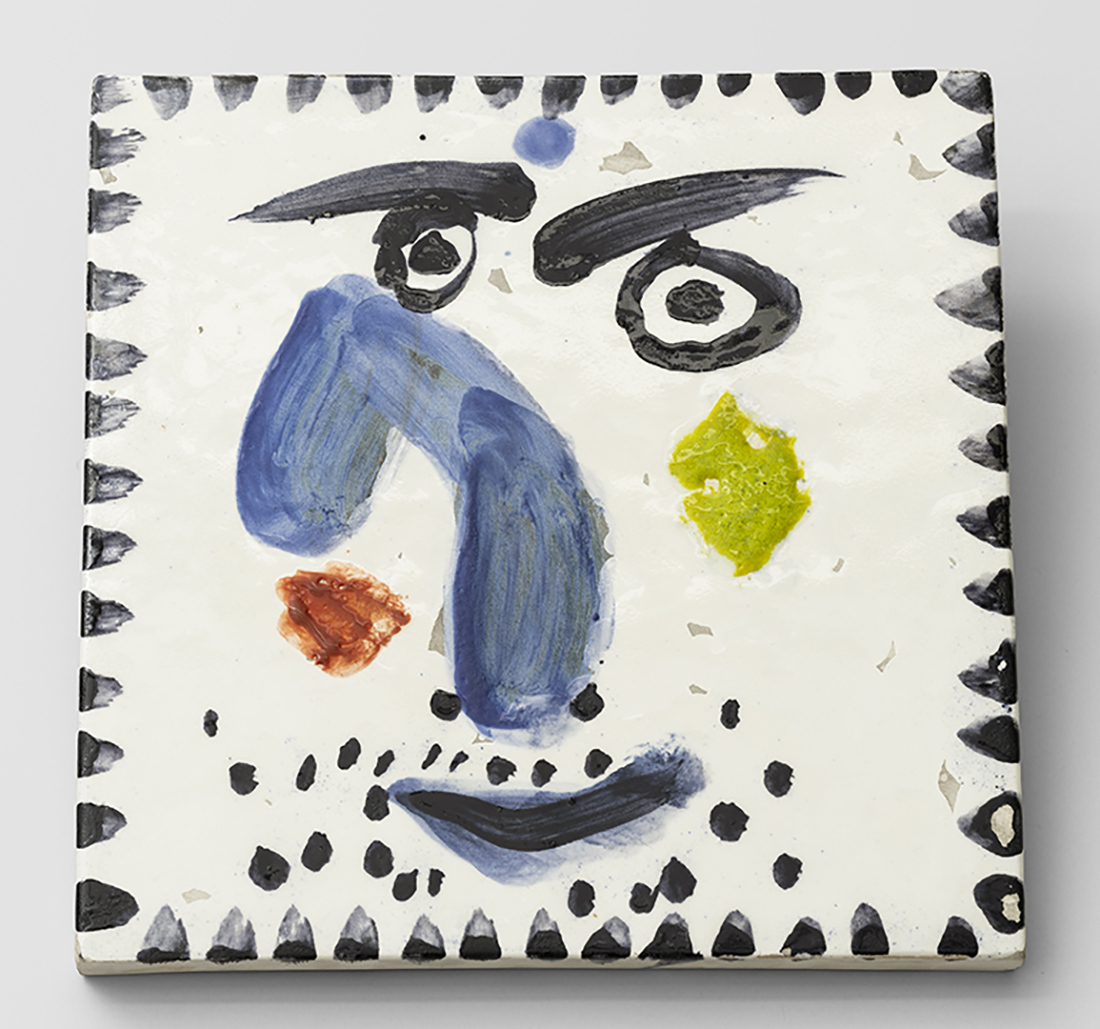
Pablo Picasso, Carreau décoré d’un visage/Kakelplatta med ansikte, Mougins, 15 juni 1963. Fundación Almine y Bernard Ruiz-Picasso. © Succession Picasso/Bildupphovsrätt 2025. Foto: Hugard & Vanoverschelde © FABA
Picasso and Ceramics
Pablo Picasso
Runtime: 01:57
Narrator: After the Second World War, Picasso left Paris and settled on the French Riviera, where ceramics quickly became one of his most important fields of work, resulting in more than 4,000 objects.
He discovered Vallauris in 1946 through a local ceramics exhibition and returned the following year to work with Suzanne and Georges Ramié at the Madoura workshop. A few years later, he moved to Vallauris to be close to the clay, the kilns and the craft expertise that enabled his extensive ceramic production.
At Madoura, Picasso rapidly mastered techniques such as mould-pressing, incising, relief, modelling and painting with engobes, oxides and glazes – knowledge he then pushed to the limits of traditional ceramic practice. He made plates with impressions of tools and found objects, vessels built like small sculptures, and vases whit openings that took the form of animal heads or masks.
The plates shown here, made between May and July 1963, form a coherent group in which Picasso systematically investigates how a face can be constructed with the fewest possible means. Despite their similar dimensions, the series is technically varied and includes both white and red terracotta.
Ceramics offered him new possibilities shaped by the material’s own conditions: the unpredictability of glazes, the transformations in the kiln and the interplay between form and surface. Many motifs were developed simultaneously in clay and on canvas, particularly animals, masks and faces.
Life in Vallauris also had a social dimension. The town was a lively centre for ceramics, and Picasso took part in local events and designed posters for village festivals. Ceramics offered him a quick, experimental mode of working that he continued to pursue even in his last years, when pressed reliefs, simplified faces and modelled animals reveal how closely sculpture and painting could intertwine.